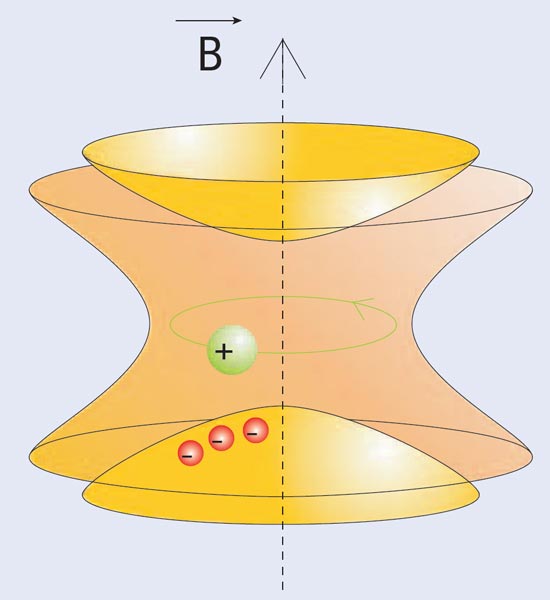
The search for the neutrinoless double-beta decay (ββ0ν decay) aims to solve a long-standing question concerning the nature of neutrinos. The decay, in which a nucleus decays by emitting two electrons but no neutrinos, can occur only if the neutrino is its own antiparticle, i.e. a Majorana particle. If it occurs, it must be extremely rare, with a half-life greater than 1024 years. This poses an enormous experimental challenge regarding its unambiguous detection, with just a few nuclear isotopes offering a useful hunting ground. Now an experiment at the ISOLDE facility at CERN has identified a new potential candidate, the palladium isotope 110Pd.
The signature for ββ0ν decay appears in the sum of the energies of the two emitted electrons, which should have a single peak at the Q value for the decay, i.e. at the energy corresponding to the mass difference between the initial and final nuclide. (In double-beta decay with neutrinos (ββ2ν), the emitted electrons have a broad energy spectrum.) Calorimetric experiments searching for ββ0ν require detectors fabricated from sufficient quantities of the transmuting material to allow the detection of a decay within a reasonable amount of time. In addition, the energy of the decay peak must be known precisely if the detector is to have a high resolution at the correct energy.
With its high natural abundance, 110Pd offers a promising alternative for double-beta decay searches, now that its Q value has been measured directly with unprecedented accuracy. An experiment using the Penning-trap mass spectrometer ISOLTRAP at ISOLDE has determined the Q value from the cyclotron frequency ratio of 110Pd and its decay-product 110Cd by manipulating a few, singly charged ions in an isolated environment (Fink et al. 2012).
In a Penning trap, a charged particle is bound radially on the cyclotron orbit by a homogeneous magnetic field, while an electrostatic potential between the hyperbola-shaped electrodes provides axial confinement (see figure). Since the ions are trapped in three dimensions, they exhibit three eigenmotions (only one of which is shown in the figure for simplicity). An applied radio-frequency field can modify the energy stored in the eigenmotions, resonantly enhancing the energy transfer when it reaches the exact eigenfrequency. This can be measured using a technique known as time-of-flight ion-cyclotron-resonance. Usually, fewer than 10 ions of one species are excited in the trap and the cyclotron frequency is determined. The other species is then loaded into the trap and excited. This measurement cycle is repeated many times in order to collect statistics and minimize systematic effects.
In this experiment, the Q value was determined after roughly two days of measurement to be Q = 2017.85(64) keV. This value is shifted by 14 keV compared with previous results and is 17 times more precise. While the shift leads to a new value for the 110Pd half life, the lower uncertainty should enable future experiments on ββ0ν decay to have higher resolution.
Further reading
D Fink et al. 2012 Phys. Rev. Lett. 108 062502.








